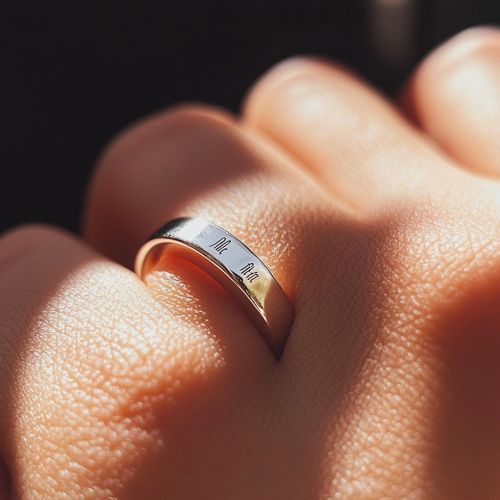Purity Ring: Difference between revisions
(Created page with "== Introduction == A '''purity ring''' is a type of ring that is worn as a symbol of commitment to abstinence until marriage. This practice is often associated with certain religious groups, particularly within Christianity, where it is used as a public declaration of one's intention to remain chaste. The concept of purity rings gained significant popularity in the late 20th century, especially in the United States, as part of the purity movement. == Hi...") |
No edit summary |
||
| Line 31: | Line 31: | ||
Purity rings have made their way into popular culture, with several high-profile celebrities publicly wearing them as a statement of their personal beliefs. This visibility has contributed to the broader awareness and discussion of the concept, although it has also led to some misconceptions about the practice. | Purity rings have made their way into popular culture, with several high-profile celebrities publicly wearing them as a statement of their personal beliefs. This visibility has contributed to the broader awareness and discussion of the concept, although it has also led to some misconceptions about the practice. | ||
[[Image:Detail-98351.jpg|thumb|center|A close-up image of a purity ring on a person's hand, with a simple design and an engraved message.]] | |||
== See Also == | == See Also == | ||
Revision as of 08:42, 9 October 2024
Introduction
A purity ring is a type of ring that is worn as a symbol of commitment to abstinence until marriage. This practice is often associated with certain religious groups, particularly within Christianity, where it is used as a public declaration of one's intention to remain chaste. The concept of purity rings gained significant popularity in the late 20th century, especially in the United States, as part of the purity movement.
Historical Context
The notion of using rings as symbols of commitment is not new and can be traced back to ancient times. However, the specific use of purity rings as a pledge of abstinence is a relatively modern development. The purity movement, which gained momentum in the 1990s, was largely driven by evangelical Christian organizations. These groups promoted the idea that sexual purity was a virtue that should be maintained until marriage, and purity rings became a tangible representation of this commitment.
Symbolism and Meaning
Purity rings serve as a physical reminder of a personal vow to abstain from sexual activity until marriage. The rings are often inscribed with messages or symbols that reinforce the commitment, such as Bible verses or the word "purity." The act of wearing a purity ring is typically accompanied by a ceremony or pledge, where individuals publicly declare their intention to remain abstinent.
Cultural and Religious Significance
The use of purity rings is most prevalent among evangelical Christians, although it is not exclusive to this group. Other religious communities, including some Catholic and Mormon groups, have also adopted the practice. In these contexts, the purity ring is seen as a tool for promoting traditional values and encouraging young people to adhere to religious teachings regarding sexuality.
Criticism and Controversy
While purity rings have been embraced by many as a positive expression of faith and commitment, they have also faced criticism. Critics argue that the emphasis on abstinence can lead to feelings of shame or guilt, particularly if individuals struggle to maintain their vow. Additionally, some contend that the focus on sexual purity can overshadow other important aspects of personal development and relationships.
Psychological and Social Implications
Research on the psychological and social effects of wearing purity rings has yielded mixed results. Some studies suggest that individuals who wear purity rings may experience increased pressure to conform to community standards, which can impact their self-esteem and mental health. Others argue that the rings provide a sense of identity and belonging, reinforcing positive behaviors and values.
Variations and Alternatives
While the traditional purity ring is a simple band, there are many variations available. Some rings are adorned with gemstones or intricate designs, while others are made from alternative materials such as wood or silicone. In addition to rings, some individuals choose to wear other symbols of their commitment, such as necklaces or bracelets.
Impact on Popular Culture
Purity rings have made their way into popular culture, with several high-profile celebrities publicly wearing them as a statement of their personal beliefs. This visibility has contributed to the broader awareness and discussion of the concept, although it has also led to some misconceptions about the practice.

